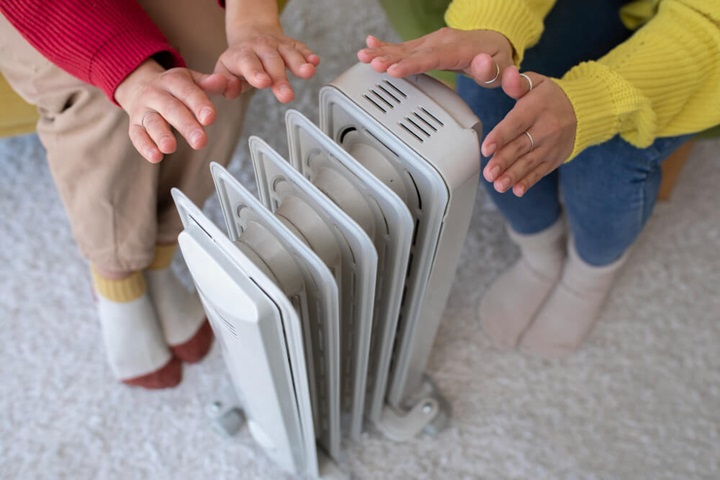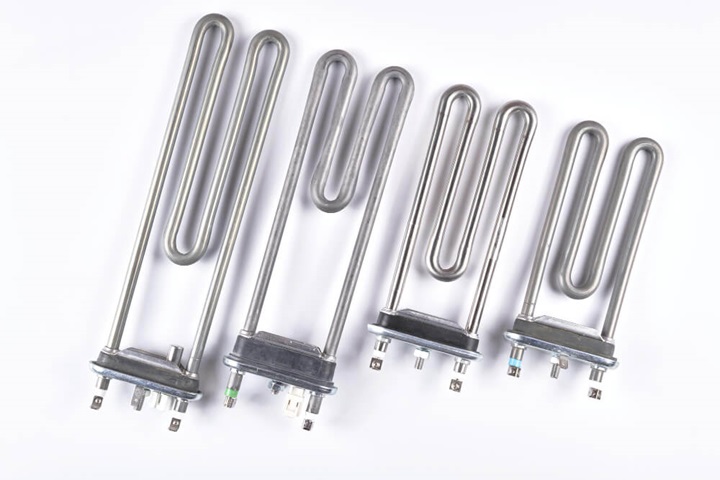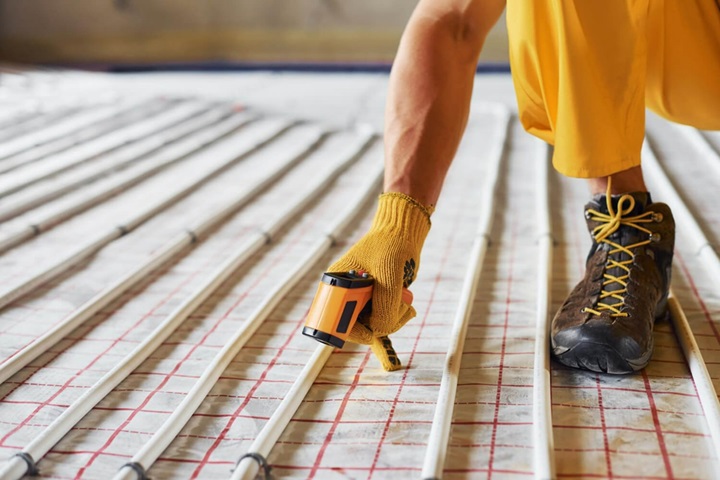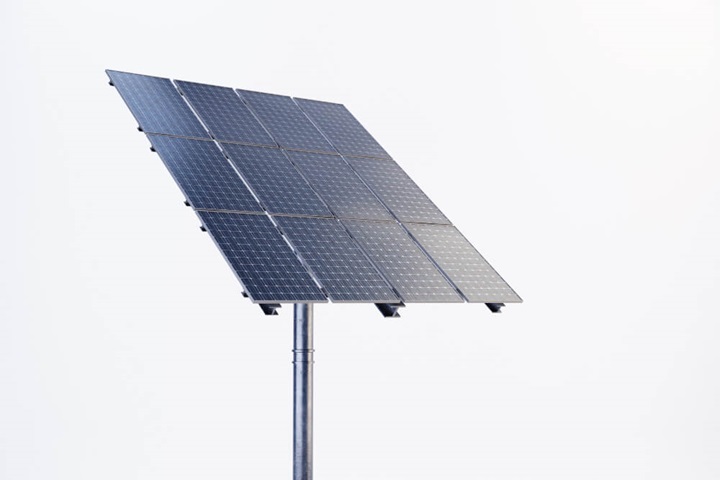A cold, damp shed isn’t just uninviting—it can ruin tools, wreck furniture, and stop you using the space when you need it most. Whether you use it for work or storage, heating a shed can make all the difference.
Many homeowners may think that heating a shed isn’t necessary, but this can vary due to the size of the shed, and what it is used for. For those concerned about heating a shed efficiently, this article will guide you on how to heat a shed without wasting money or energy. From small garden sheds to larger outdoor workspaces, you’ll find practical shed heating ideas that suit your space, setup, and budget. We’ll look at the best types of shed heaters, how insulation helps retain warmth, and smart ways to keep your shed warm overnight. Whether you’re after the cheapest way to heat a shed UK homeowners swear by or long-term solutions like underfloor heating, we have you covered.
Key Points:
- Find shed heater ideas to suit every space and budget
- Learn how to heat a shed safely and efficiently
- Compare running costs of popular heating options
- Discover insulation tips for warmer, drier sheds
- Explore low-cost ways to keep your shed warm overnight
- Does Heating Your Shed Matter?
- What Heater is Best for a Shed?
- 1. Electric Heaters
- 2. Gas Heaters
- 3. Oil-Filled Radiators
- 4. Tubular Heaters
- 5. Underfloor Heating
- 6. Solar Heating
- 7. Log Burners
- Insulation Tips for Sheds
- Floor Insulation
- Wall and Roof Insulation
- Windows and Doors
- Best Practices for Heater Placement
- Don’t Forget Ventilation
- How to Keep Your Shed Warm Overnight
- What Is the Cheapest Way to Heat a Shed in the UK?
- Cost-Saving Options for Heating a Shed
- FAQs
- Sources
Does Heating Your Shed Matter?
More people are turning sheds into usable spaces—home offices, gyms, studios, or even just better storage. But without heat, they’re only good for part of the year. Knowing how to heat a shed means you can make the most of your space, no matter the season.
Benefits of a Warm Shed
Whether you’re storing tools or working inside, a heated shed undoubtedly makes life easier. Here are some key benefits of why a warm shed is beneficial and worthwhile for homeowners:
- Proper shed heating helps protect items like electronics and garden gear from frost damage.
- Heating a shed efficiently stops damp and mould from creeping in over winter.
- Improve your shed for various activities; no matter whether you’re spending time inside—working, relaxing, or crafting—a warm space makes a big difference.
Many people start searching for the cheapest way to heat a shed UK homeowners can rely on, but warmth doesn’t just mean comfort. It protects your things, improves air quality, and makes the space genuinely useful all year round.
What to Think About Before You Start Heating a Shed

Before jumping into buying heaters, it’s worth thinking about what you’re working with. These quick checks can help you choose the best setup:
- Shed size: Bigger spaces need more powerful heating. Small sheds can get by with a plug-in heater, while larger ones may need underfloor or wall-mounted options.
- Power access: Do you have electricity in the shed? If not, you’ll need to think about battery power, gas heaters, or solar panels.
- Budget: Costs vary. A fan heater might cost less upfront, but could be more expensive over time. Solar underfloor heating options cost more to set up, but are cheap to run.
- How you use the space: Someone growing plants or storing tools might need background heat. If you’re in there all day, comfort and consistent warmth become more important.
Everyday Uses for a Heated Shed
With the right setup, sheds can do much more than just store stuff. Heated sheds work well as:
- Home offices or hobby rooms
- Guest rooms or quiet spaces
- Protected storage for tools or machinery
- Warm zones for early planting and seedling prep
There are lots of shed heater ideas to match different goals. The best approach is to think about what you need your shed to do—and then choose from the shed heating ideas that match.
What Heater is Best for a Shed?
Choosing the right heater depends on how you plan to use the space, what power sources are available, and how much you’re willing to spend. There’s no one-size-fits-all option—but there are lots of smart shed heating ideas to explore. Below, we’ve broken down the most popular heater types for sheds to help you decide what’s best for your space.
1. Electric Heaters

Electric heaters are one of the most common shed heater ideas. They’re easy to set up, work well in smaller spaces, and provide heat almost instantly. Some types, like infrared heaters, warm up objects (not just the air), making them ideal if you’re sitting still for long periods. Others, like fan heaters, spread heat quickly but can be expensive to run long-term.
- Good for: Quick warmth, smaller sheds, occasional use
- Running cost: Medium to high (approx. 12.4p/kWh)
- Safety note: Keep away from water and flammable materials
If you’re looking for the cheapest way to heat a shed UK users go for during mild winters, a plug-in electric heater with a thermostat might do the job—just remember to keep it off when not in use.
2. Gas Heaters

Gas heaters don’t need mains power, which is handy for off-grid sheds. They can output a lot of heat quickly and are often portable. However, they do need ventilation to avoid build-up of fumes or moisture.
- Good for: Powerless sheds, occasional use
- Running cost: Moderate (you’ll need to top up gas canisters)
- Safety note: Ventilate properly and never leave unattended
Gas options can be practical, but for many, the need for constant refuelling and ventilation limits daily use. But is gas or electric better?
3. Oil-Filled Radiators

Oil-filled radiators are known for their ability to stay warm even after they’re turned off. They heat up slowly but keep things toasty without constant power.
- Good for: Sheds used regularly, insulated spaces
- Running cost: Low to moderate
- Bonus: Built-in thermostats and timers make them energy-efficient
They’re a good balance between performance and running costs if you’re heating a shed for work or hobbies.
4. Tubular Heaters

These are slim, wall-mounted heaters that are designed to maintain a low, constant temperature—ideal for frost protection or moisture control.
- Good for: Storage sheds, background heat
- Running cost: Very low (often 1p/hour)
- Installation: Easy, usually plug-and-play
If you want the cheapest way to heat a shed UK long-term without high usage, tubular heaters are a solid choice.
5. Underfloor Heating

Underfloor heating is perfect if you’re using the shed regularly and want something permanent. It gives you long-term warmth, even heating across the floor without cluttering up the space.
- Good for: Workshops, offices, hobby sheds
- Cost to install: High upfront
- Cost to run: Low over time
Note: Electric underfloor heating is best suited for sheds, especially if you are constructing your shed from scratch.
If you’re planning a full shed conversion, this is one of the more advanced but efficient shed heating ideas. Be sure to be aware of problems with underfloor heating if opting for this solution.
6. Solar Heating

Want to go green? Solar panels can power electric heaters or warm water for radiators inside the shed. The setup takes work and costs more initially, but once it’s in place, it’s free to run.
- Good for: Off-grid sheds, long-term heating
- Cost to install: High
- Cost to run: Free
Note: Works best with good sun exposure and proper storage battery systems
If you’re wondering how to heat a shed without raising energy bills, solar might be your answer.
7. Log Burners

For a cosy, traditional feel, nothing beats a wood-burning stove. It heats well and gives that cabin-like atmosphere—though it needs space and proper installation.
- Good for: Leisure spaces, summerhouses
- Running cost: Low (especially if you source free wood)
- Safety: Must be fitted with a carbon monoxide detector
While not ideal for workspaces, they’re great for turning a shed into a comfy winter retreat. But can you still have a log burner when considering log cabin heating? Learn more in our article.
Insulation Tips for Sheds
When exploring shed heater ideas, it’s also worth taking the time to insulate the space properly. Without insulation, most of the heat you generate will disappear through gaps, floors, and thin walls. That means higher energy bills and less comfort—no matter what heater you choose.
Floor Insulation
Heat rises, but a large amount escapes through the floor. To prevent this, install foam board insulation beneath your floorboards. If your shed is already built, consider laying underfloor insulation boards over existing flooring or adding a raised insulated floor frame. This helps reduce heat loss and gives your heating system a better chance of keeping the space warm overnight.
Wall and Roof Insulation
For walls, rockwool or fibreglass insulation can make a big difference. These materials trap warm air while also helping to manage moisture. If you’re after a low-cost option, foil-backed bubble wrap stapled to the inside walls is one of the cheapest ways to heat a shed UK users recommend for DIY improvements.
Adding a layer of OSB or plywood over insulation materials creates a tidy finish and helps protect the insulation from wear and tear.
Windows and Doors
Gaps around windows and doors can cause serious heat loss. Use expanding foam to seal any visible holes or cracks. Install rubber weatherstrips around doors to block draughts, and apply clear film to windows for an extra layer of insulation.
Best Practices for Heater Placement
Knowing how to heat a shed isn’t just about picking the right heater—it’s also about placing it in the best spot.
- Place heaters opposite doors or windows to reduce heat loss
- Keep heaters off the floor for better airflow
- Avoid placing heaters too close to stored items for safety
This is especially important for small sheds where space is limited. Good placement helps distribute warmth evenly and makes your heating system more efficient.
Don’t Forget Ventilation
It might seem counterintuitive, but ventilation matters when heating a shed. Without airflow, moisture builds up, especially in colder months. Aim to install vents at both low and high points in the shed to create cross-ventilation. This helps circulate warm air while keeping condensation under control.
How to Keep Your Shed Warm Overnight
Many people look for shed heating ideas that will keep the temperature up through the night—especially for storing tools, plants, or electronics. Here are some simple ways to hold onto heat:
- Use Thermal Mass: Materials like brick, concrete, or large stone objects hold onto heat and release it slowly. Adding these to your shed can help keep it warmer for longer, even after the heater is off.
- Add Thermal Curtains or Blankets: Hang thermal curtains over windows and doorways. They block out cold air and help trap heat inside. If you have open shelving or wall gaps, you can also use thick blankets or fabric panels to create a thermal barrier.
What Is the Cheapest Way to Heat a Shed in the UK?
If you’re focused on keeping costs low, here’s how common heaters stack up:
| Heater Type | Average Approx. Cost per Hour | Notes |
| Electric Heaters | 12p–28p | Depends on type (fan, panel, or infrared); fast heat but higher running costs. |
| Gas Heaters | 9p–20p | Based on bottled gas usage; requires good ventilation. |
| Oil-Filled Radiators | 6p | Retains heat well; efficient for longer periods. |
| Tubular Heaters | 1p | Low output, ideal for background heat or frost protection. |
| Underfloor Heating | 3p-8p | Electric UFH based on smart thermostat control; efficient over time. |
| Solar Heating | Free (After installation) | No ongoing cost; setup can be expensive but pays off long term. |
| Log Burners | Varies (low-moderate) | Cost depends on wood supply; can be free if fuel is available. |
Pro Tip: For those looking for the cheapest way to heat a shed UK style with minimal ongoing costs, tubular heaters, solar setups, or a log burner (with free fuel access) offer the best long-term savings.
Cost-Saving Options for Heating a Shed
In conclusion, there are many smart ways to heat a shed, from simple plug-in options to longer-term systems like underfloor heating or solar heating. The right choice depends on your space, budget, and how you plan to use the shed. With good insulation, smart placement, and the right heater, you can turn any shed into a warm, usable space all year round. Whether you’re after comfort or cost savings, there’s a shed heating idea to suit every setup.
FAQs
How can I stop moisture building up when heating my shed?
To reduce moisture while heating your shed, fit vents at different heights to allow air to flow through. A vent near the floor and another higher up on the opposite wall helps warm air circulate and prevents condensation. You can also use a dehumidifier to pull extra moisture from the air, keeping your shed dry and protecting anything stored inside.
Is it safe to leave a shed heater on overnight?
Some heaters can be left on overnight, but it depends on the type. Oil-filled radiators and tubular heaters with timers or thermostats are usually safe for long use. Fan heaters or gas heaters, on the other hand, should never be left running unattended due to the risk of fire or carbon monoxide. Always stick to the manufacturer’s safety advice.
Can I use an extension lead to power a shed heater?
It’s best to avoid using standard extension cords with heaters, especially if they’re not rated for high power. Thin cables can overheat and pose a fire risk. If you plan to run a heater often, it’s safer to get a proper power supply installed in the shed or ask an electrician for advice on the safest setup.
Can underfloor heating be added to a shed after it’s built?
Yes, electric underfloor heating mats can be retrofitted to most sheds. You may need to lift the current flooring to install them, but they’re thin enough to work with vinyl, tile, or laminate without changing the floor height too much. It’s a good option if you want consistent heat and don’t have space for bulky heaters.
Do I need planning permission to install heating in my shed?
Generally, you won’t need planning permission just to add heating. However, if you’re making big changes—like installing flues, adding complex electrics, or turning your shed into a living space—you might need to follow Building Regulations. If you’re unsure, it’s always best to check with your local council first.
Sources
GOV.UK. (2012) Building regulations approval. [online] Available at: https://www.gov.uk/building-regulations-approval [accessed 19/05/2025]
